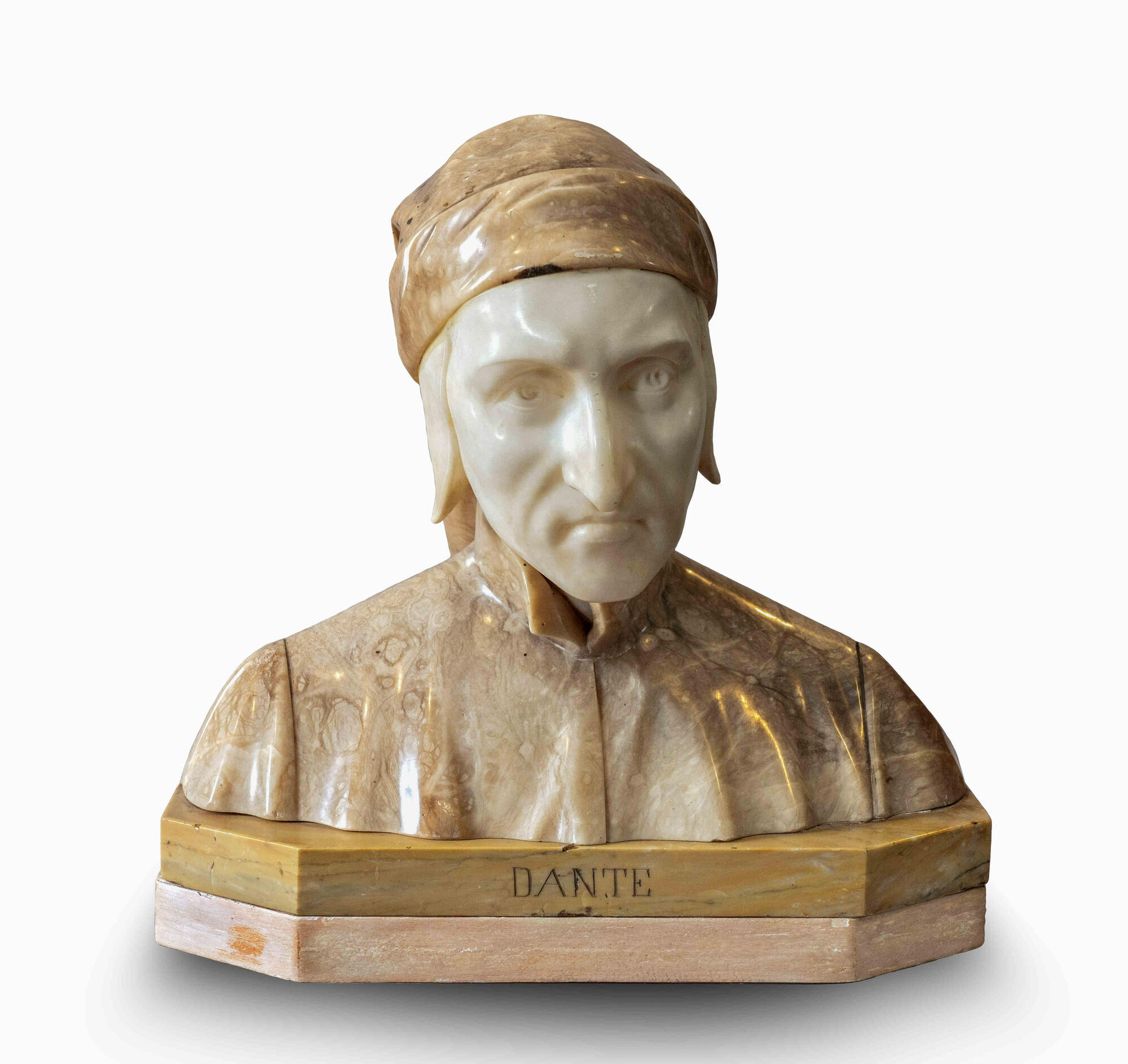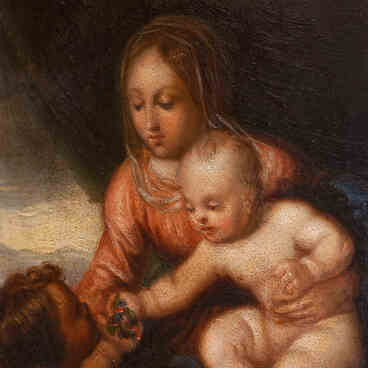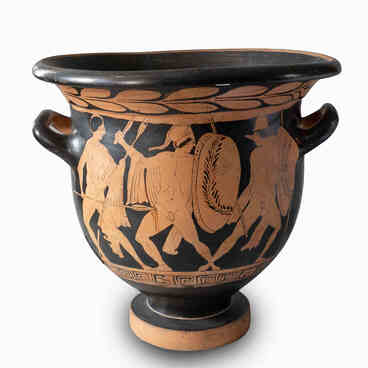The living room, which belongs to the memorial part of the exhibition, presents two marble sculptural portraits of the most famous Italian poet Dante and his beloved Beatrice.
The poet Dante was one of the most prominent thinkers of the Middle Ages. The literary movement “Dolce Stil Nuovo” played an important role in Dante’s becoming the poet that he was. The essential concept of the movement was a philosophical vision of divine love and the adoration of female beauty. The poet’s one and only muse was a girl from a noble Florentine family named Beatrice Portinari. Dante saw his beloved only twice, the first time being in early childhood. The poet’s beloved Beatrice passed away early in life at the age of 24. This was a real tragedy for Dante.
The portrait of Dante is made of Carrara marble and demonstrates impressively high sculptural skills. The famous thin and white Carrara marble comes from the Apuan Alps. The material was named after Carrara — an Italian city located in the Tuscany region. Carrara is the world capital for quarrying and processing this unique marble. Marble from the Carrara quarries was mined as early as antiquity, in the Copper Age. This material was also widely popular in the days of ancient Rome: Carrara marble was used in the construction of the famous Pantheon and Trajan’s Column. Many prominent Italian sculptors worked with Carrara marble: the renowned “David” by Michelangelo was carved from it.
The images reminiscent of Italy are one of the most interesting parts of Nikolai Golovanov’s collection. Throughout his life, the conductor visited this country several times, for both vacation and business purposes. Like the poet Dante, Nikolai Golovanov was a one-woman man: his only muse was Antonina Nezhdanova, an outstanding singer and performer in the Bolshoi Theater. Despite the significant age difference (Nezhdanova was much older), Golovanov and Nezhdanova were able to maintain love and admiration for each other throughout their whole life together.
The poet Dante was one of the most prominent thinkers of the Middle Ages. The literary movement “Dolce Stil Nuovo” played an important role in Dante’s becoming the poet that he was. The essential concept of the movement was a philosophical vision of divine love and the adoration of female beauty. The poet’s one and only muse was a girl from a noble Florentine family named Beatrice Portinari. Dante saw his beloved only twice, the first time being in early childhood. The poet’s beloved Beatrice passed away early in life at the age of 24. This was a real tragedy for Dante.
The portrait of Dante is made of Carrara marble and demonstrates impressively high sculptural skills. The famous thin and white Carrara marble comes from the Apuan Alps. The material was named after Carrara — an Italian city located in the Tuscany region. Carrara is the world capital for quarrying and processing this unique marble. Marble from the Carrara quarries was mined as early as antiquity, in the Copper Age. This material was also widely popular in the days of ancient Rome: Carrara marble was used in the construction of the famous Pantheon and Trajan’s Column. Many prominent Italian sculptors worked with Carrara marble: the renowned “David” by Michelangelo was carved from it.
The images reminiscent of Italy are one of the most interesting parts of Nikolai Golovanov’s collection. Throughout his life, the conductor visited this country several times, for both vacation and business purposes. Like the poet Dante, Nikolai Golovanov was a one-woman man: his only muse was Antonina Nezhdanova, an outstanding singer and performer in the Bolshoi Theater. Despite the significant age difference (Nezhdanova was much older), Golovanov and Nezhdanova were able to maintain love and admiration for each other throughout their whole life together.



